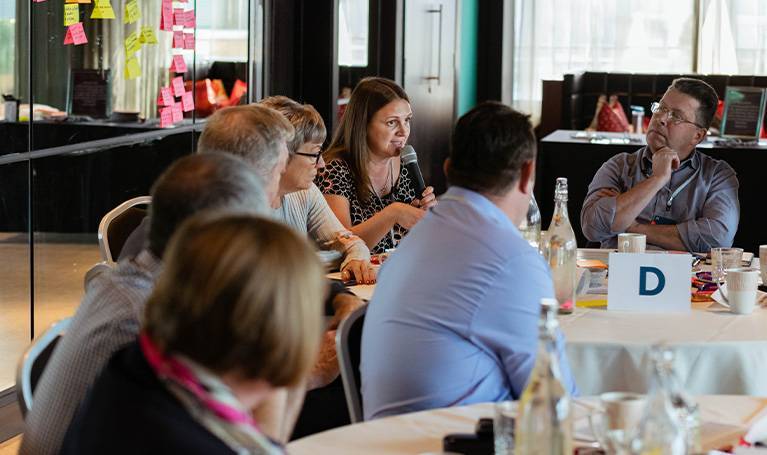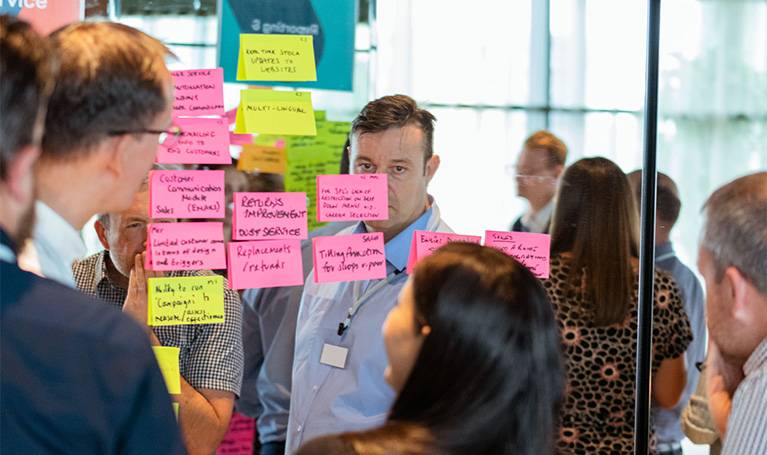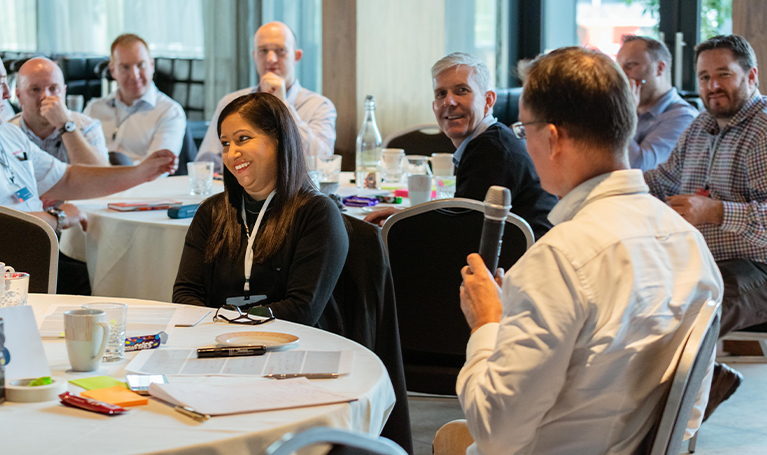
SMEG Customer Case Study
Download this data sheet to explore the features and benefits of Naveo Commerce for Enterprise Grocery.
At our recent User Day we adopted the Google Design Sprint approach to ask our customers, “How can we make the Naveo Commerce solution better?”. The output from our user base was phenomenal…
It’s a no-brainer to involve your customers in the evolution of your product. Particularly if that product is something they use day-in, day out at the heart of their business operations.
However, the reality of user engagement can be a bit daunting, particularly when you gather people together to ask, “How can we make it better?”
Sometimes you get too much input back that it gets overwhelming. Or sometimes you get stuck on the first thing that the loudest voice in the room raises and then lose the thinking from everyone else. And sometimes the discussion just descends into the negative and is difficult to pull back round. Which never makes for a fun day for anyone!

However, it’s well worth it. The prize of understanding where customers are at in their perceptions, both around what they love about the product and also where it needs improving is just too important to miss out on. But you need a productive, tried and tested process to get good quality input AND make it an experience that everyone enjoys and finds useful.
For all these reasons, we used an adapted Google Design Sprint process at our recent OMS User Day. In the morning we publicly announced the launch of OMS v10, which is the culmination of 2 years work bringing the market-leading capability of OMS to the cloud.
However in the afternoon we turned the session over the two and a half hours of post-it notes, structured discussion, idea creation and roadmap planning. The output from our user base was phenomenal… over 200 individual observations, questions and ideas raised refined down to around 25 workable, fleshed out concepts to input into our product roadmap.


Because the process doesn’t rely on a lot of group discussion and negotiation, but rather individual working and present-back, every single person got to contribute the best of their thinking on how we can make the product even better for those who rely on it. We got some fantastic ideas, the plan now is to take these back to base, prioritise them and report back to the user community in January on how we intend to roll out these and other suggestions throughout 2020 and beyond.
The future is bright for OMS and its users. With ongoing input from our customers and the commitment of our developers to keep making a product that solves real market needs we’re really optimistic about what our clients can achieve through having a product that delights them.
The Sprint process was straightforward, useful and engaging and we’d encourage anyone who needs to get teams involved to collaborate and crack a problem to give it a go. If you’d like some help with it, then – of course – do feel free to give us a ring!

Download this data sheet to explore the features and benefits of Naveo Commerce for Enterprise Grocery.

As Naveo Commerce plans its exciting launch of Scan & Go supermarket technology, we look at the key differences between this and self-checkout services already offered in most grocery stores.

As Naveo Commerce plans its exciting launch of Scan & Go supermarket technology, we look at the key differences between this and self-checkout services already offered in most grocery stores.